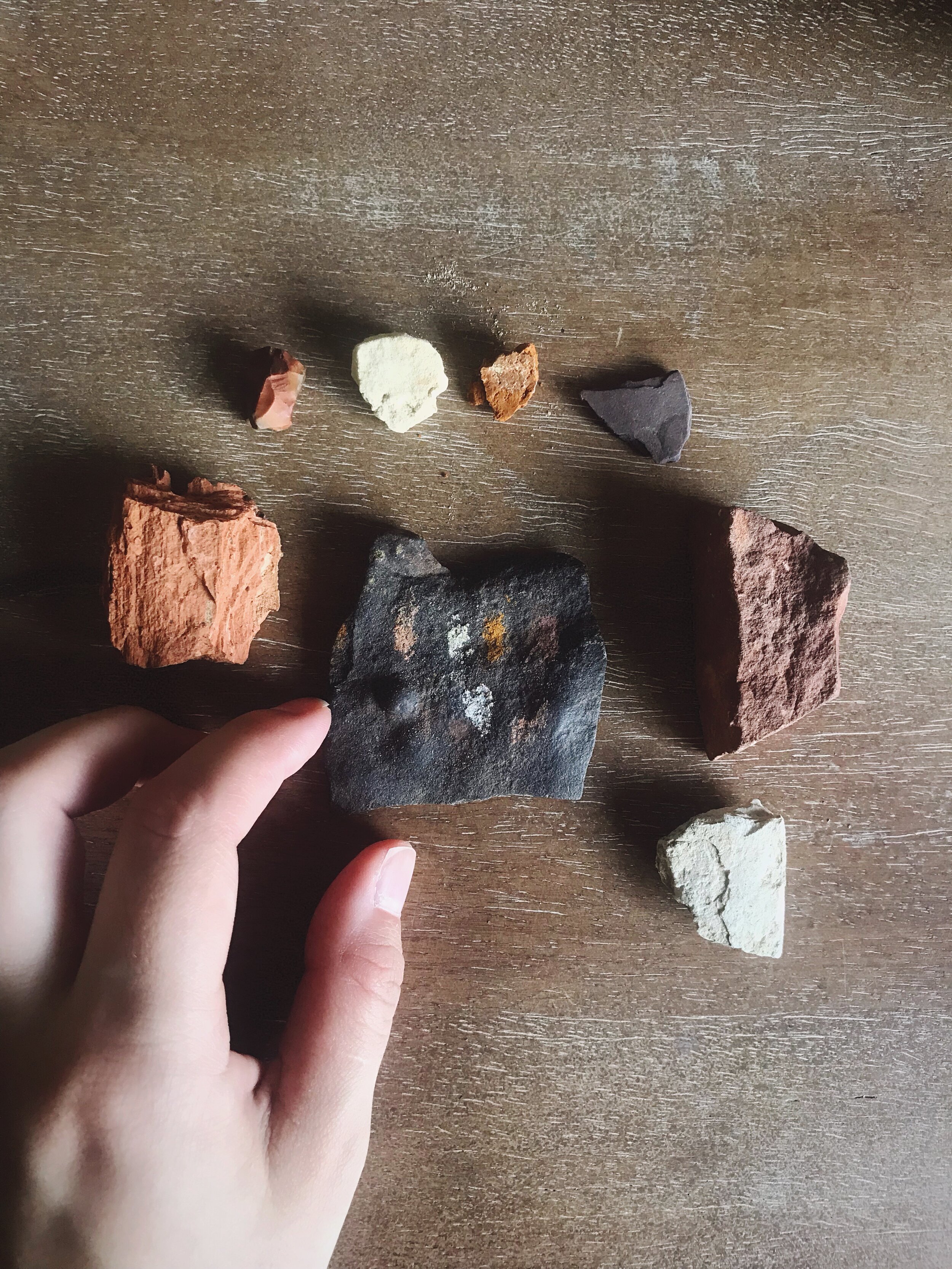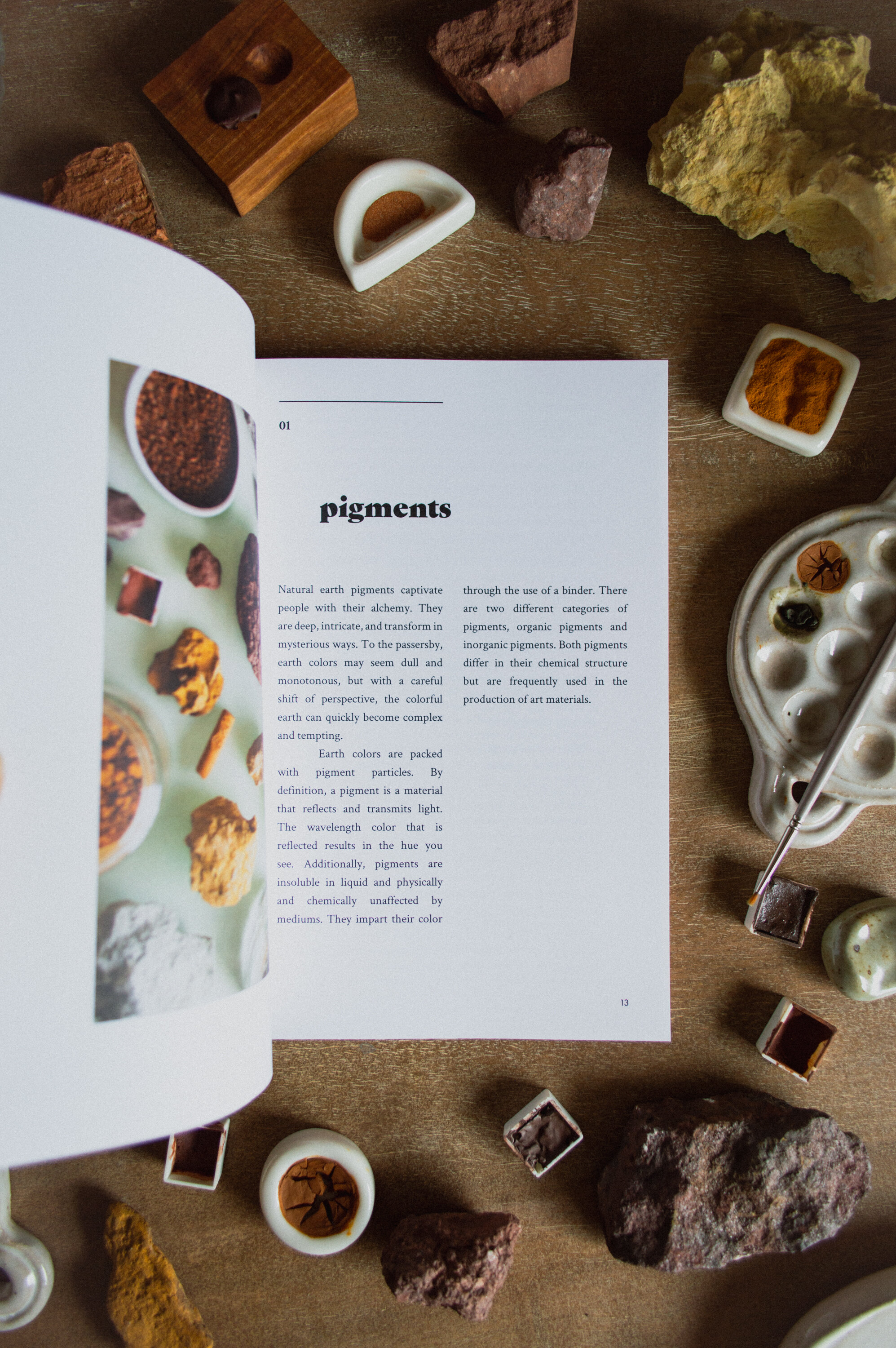Testing for Natural Pigments
As you begin to collect natural earth pigments, you may find it helpful to do a couple of local tests on the rocks you have collected. These tests will help identify the materials you are collecting, as well as build an understanding for the characteristics of natural earth pigments.
testing for natural pigments
Both of these tests can be conducted in the field while you are collecting natural earth pigment samples.
materiality assessment
The first test that you can do onsite will help identify if the rock you collected is a pigment.
conducting a Scratch Test
Rub your found pigment sample against another rock.
If it leaves a mark, it is a pigment.
Additionally, you may notice the hardness of the rock and examine the color it leaves on the other rock. Rocks that easily expose streaks of color, and tend to feel like pastels, typically have a higher content of clay. However, that doesn’t mean you need to stray away from harder rocks full of color. Iron oxide exists in an array of rock forms and sometimes even the hardest rocks make the most beautiful natural earth pigments.
Color Assessment
The second test is simple but is helpful in identifying the range of the natural colors you have found. Natural earth pigments often appear more vibrant against the contrast of green foliage.
Locate a neutral background. It can be as simple as a large, grey-colored rock.
Place all of your found rocks on top of the neutral background.
Assess the colors you have found and identify what samples you would like to bring into your studio.
Use both of these tests to ease yourself into finding and collecting natural earth pigments. Let it be a learning tool as you brush the surface of geology and environmental science. Find patience, and share in the color wonder.















